How to Cook Spaghetti Squash - Roasting
I first learned how to cook spaghetti squash when we started our Paleo diet because I wanted a low-carb, non-processed replacement for traditional pasta. I don't think I had ever actually eaten spaghetti squash before, so I had no idea how it should be cooked, or just how delicious it is!
Since then, we eat spaghetti squash regularly, and it has become one of my favorite side dishes for a lot of our recipes - topped with our Homemade Marinara or Ragu for an Italian fix; served alongside our Cast Iron Chicken Thighs or topped with our Beef Stroganoff; or add just touch of butter, salt, and pepper and enjoy all on its own.
Once you learn how to cook spaghetti squash, this overlooked vegetable can become a staple in your household too!

About Spaghetti Squash
Spaghetti squash is a great low-carb alternative to traditional pasta, as a 100g serving contains approximately 7g of carbohydrates and 1.5g fiber, giving a net total carbs of 5.5. Compare that to 1/2 cup of dry spaghetti with 22g of carbs per serving and only 1g of fiber. This is one of the primary reasons I learned how to cook spaghetti squash - so we would have a pasta alternative that fit within our Keto diet goals.
Not only is spaghetti squash relatively low-carb, it also replaces the processed dry pasta with a healthy vegetable alternative. And although I will occasionally splurge on real pasta, that is a rare occurrence and this alternative pasta provides a much more balanced and nutritional option. And if you are watching calories, it comes in at a whopping 31 calories per 100g serving; that leaves lots of room for butter, sauce, and other toppings!
One other thing you should know about how to cook spaghetti squash - you get a lot of "spaghetti" noodles from a single squash. We usually cook one medium sized spaghetti squash for the two of us, and we will have leftovers for at least 2 additional meals. Sold priced by the pound ($0.50 - $1.50/pound) or sometimes priced per squash (get the biggest one you can find!), spaghetti squash is an inexpensive side dish.
Preparing for the Oven
Just like pumpkins and other squash, spaghetti squash contains pulp and seeds that needs to be removed before eating. I prefer to scrape out the halved squash before cooking, but depending on your cooking method, you might remove seeds and pulp after it is cooked.
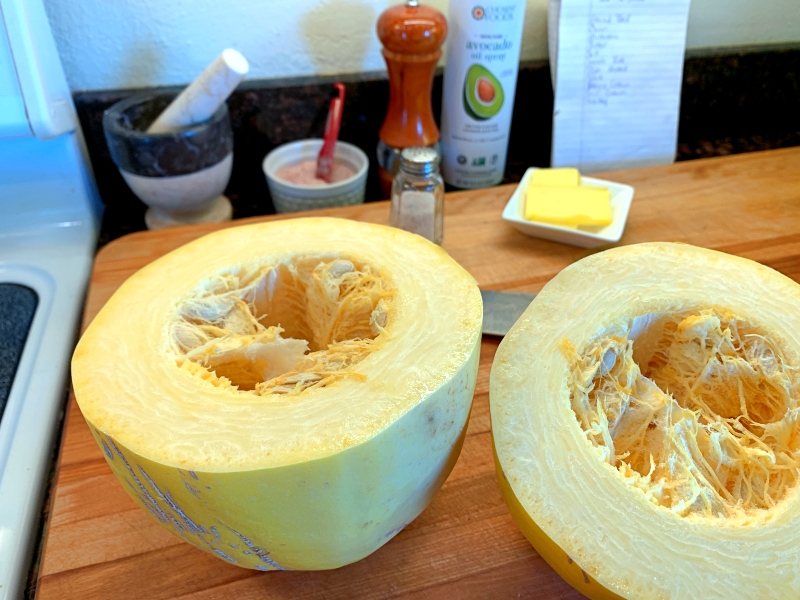
You can cut the squash in half either lengthwise, through the stem end, or in half through the "equator". I learned how to cook spaghetti squash by cutting the squash in half through the "equator." This results in much longer "noodles" once cooked, and gets us closer to our pasta replacement. If you look at the flesh of the fruit, you can see that the strands of the squash go in circles around the squash. When you cut it in half lengthwise through the stem end, you essentially cut all of the noodles in half. It still tastes the same once cooked, but it means you will get lots of short pieces of spaghetti squash vs. longer strands. To each his own, but if you have your heart set on being able to twirl your noodles in your homemade marinara, make sure to cut your squash in half!
Once cut, use a large metal spoon to scrape out the pulp and seeds until you are left with smooth walls inside the squash:
After the squash is scrapped out, I like to add either butter or olive oil to the squash, followed by a generous salting. I don't usually follow a specific recipe here - just take a few pats of butter and spread along the inside of each half of squash, and then liberally salt. During the cooking the butter will melt and will get absorbed when you remove the squash from its shell. Of course, if you are trying to stay lower fat, skip the butter or oil.
Place each squash half into an oven safe casserole dish, cut sides up. I have also read recipes for how to cook spaghetti squash that recommend placing the squash cut side down, and adding a small amount of water to the pan. I find this method to be effective in cooking the squash, but it results in more of a steamed vegetable and misses some of the flavor that comes from having the inside of the squash exposed to the direct heat. Placing the squash cut side down also negates the addition of the butter and its ability to melt into the squash while cooking.
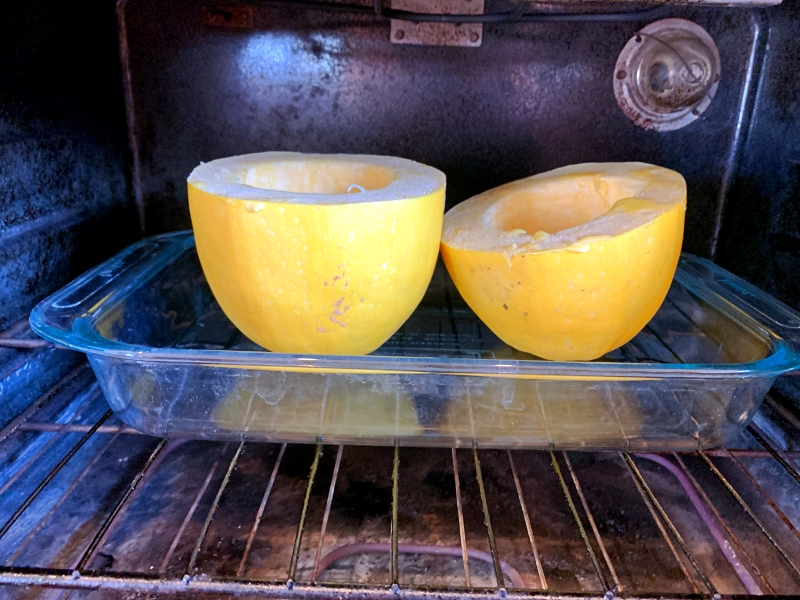
Roast the squash in a 400 degree pre-heated oven for about an hour. The squash may begin to brown on the edges, and you will know it is finished cooking once the flesh starts to easily pull away from the shell:
Once you have let the squash cool enough to handle and to remove all of the "noodles" from the shells, adjust salt and pepper to taste and then serve with your favorite sauce.
Now that you know how to cook spaghetti squash...
Check out some ideas to go along with your new found pasta replacement!
Try out our Beef Stroganoff, Homemade Marinara, or Ragu!
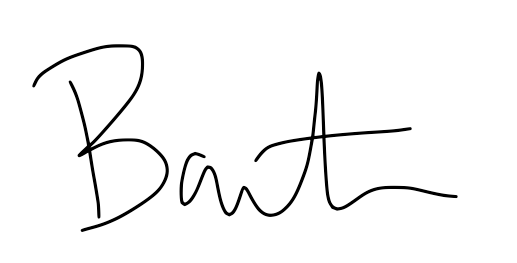
Products linked from our website are items we use in our house every. single. day. We recommend them because they provide value and contribute to our Paleo Charmed Life. If you click through our links and make a purchase, we earn a little cash, which helps us keep bringing new information to you online.
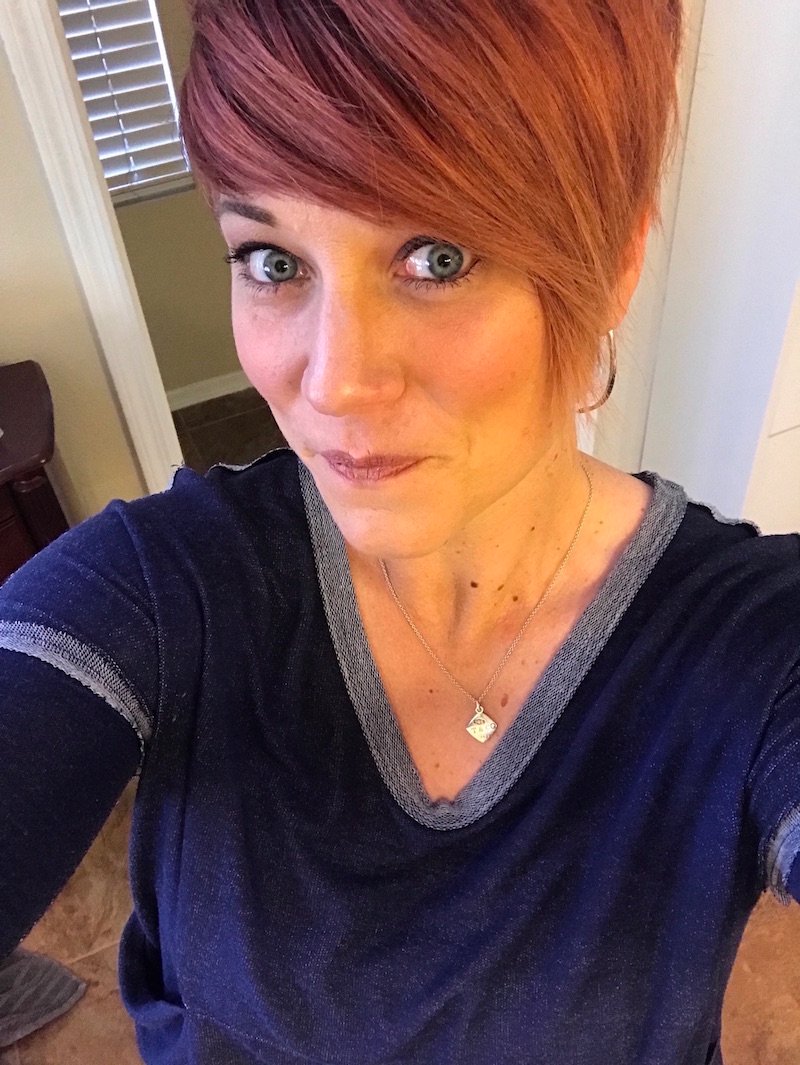


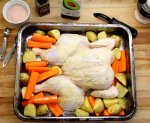
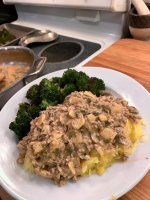
New! Comments
Let us know what you think!